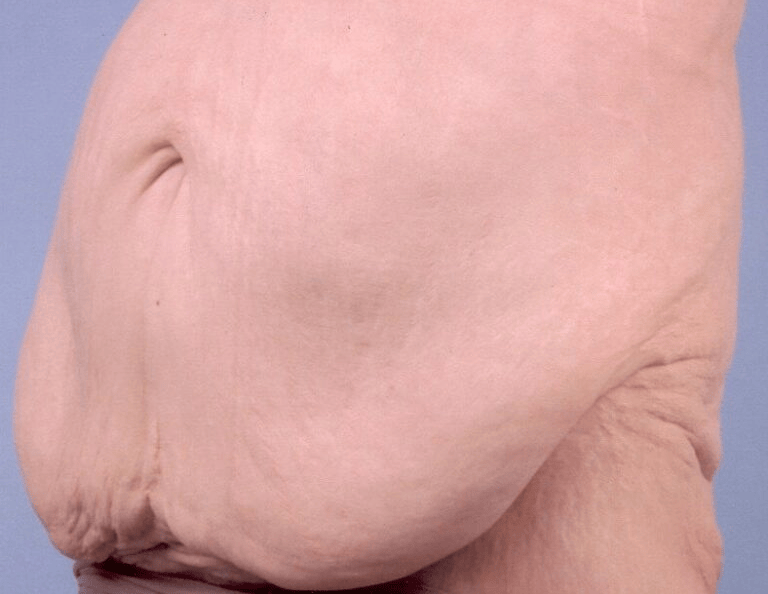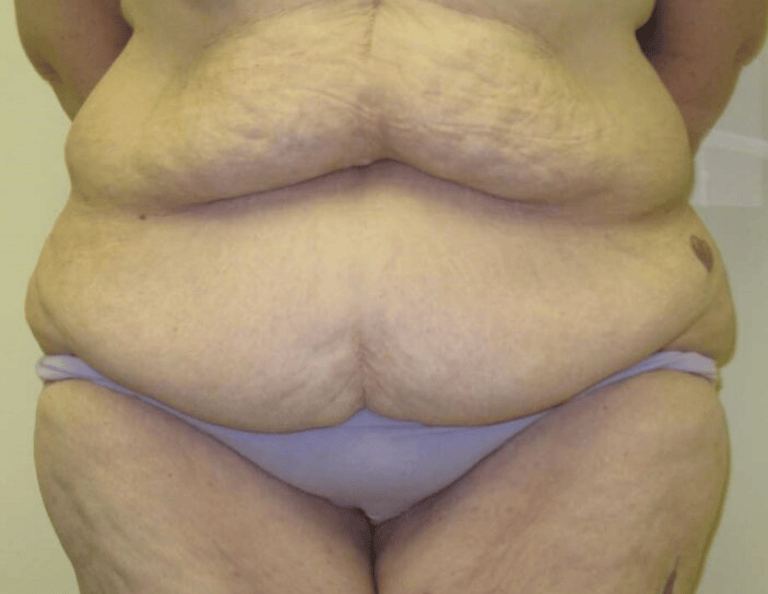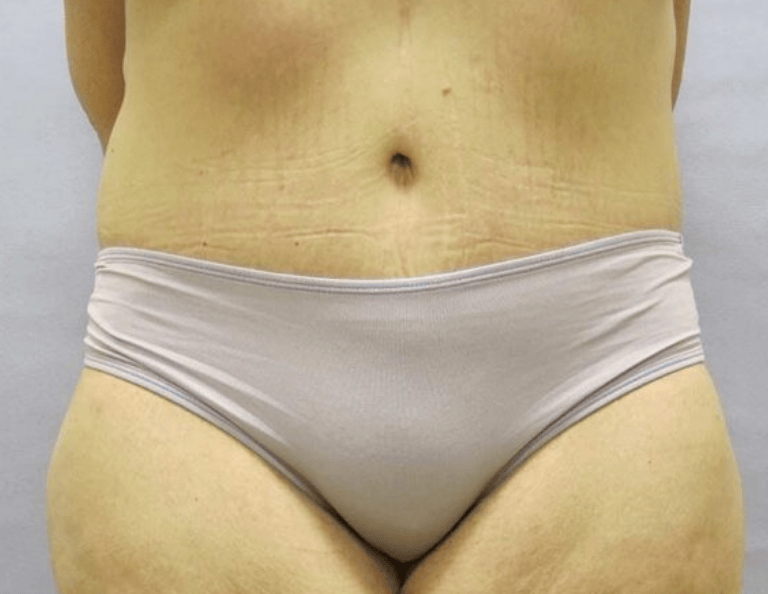Over the years, Dr. Glenn Lyle, a board-certified plastic surgeon based in Raleigh, NC, has helped countless women regain their confidence and comfort by addressing an issue that many feel they have to live with – the apron belly.
Why is it called “apron belly”? Because the excess skin and fatty tissue hangs below your upper thighs like an apron.
If you’re struggling with excess skin and fat that hangs over your lower abdomen, you’re not alone. Whether it developed after pregnancy, significant weight loss, or simply as part of aging, an apron belly can be both physically and emotionally challenging.
Fortunately, there are options to help you feel more comfortable and confident in your body. Let’s dive into what causes an apron belly and how we can address it together.

Meet Dr. Glenn Lyle
Board Certified Plastic Surgeon
Dr. Glenn Lyle, a board-certified plastic surgeon, has been proudly serving the Raleigh, NC, community at Lyle Plastic Surgery and Aesthetics Center since 2002. With a deep passion for helping patients reclaim their confidence, Dr. Lyle specializes in transformative breast surgery and body contouring procedures. Whether addressing the effects of weight loss, pregnancy, or aging, his expert care and artistic approach empower individuals to look and feel their best. Dr. Lyle is dedicated to creating beautiful, natural results that reflect each patient’s personal journey and goals.
Understanding the Apron Belly
– What Causes an Apron Belly?
An apron belly is often the result of major life changes. While everyone’s experience is unique, here are some of the most common causes:
- Pregnancy: Your body does something truly incredible during pregnancy-it stretches and accommodates new life. However, this process can leave behind excess skin and weakened abdominal muscles, making it difficult to regain a firm midsection. Many women find that despite exercise and weight loss, the skin remains stretched, and the muscle separation (diastasis recti) contributes to a bulging appearance.
- Significant Weight Loss: Losing a substantial amount of weight is a huge accomplishment, but unfortunately, the skin doesn’t always bounce back. The more weight you lose, especially rapidly, the more likely it is that excess skin will remain. Loose skin can cause discomfort, chafing, and difficulty finding well-fitting clothes. In some cases, hygiene issues may arise due to trapped moisture under the skin fold.
- Aging & Skin Elasticity Loss: As we age, collagen production slows down, and our skin doesn’t snap back like it once did. This natural loss of elasticity can lead to sagging in various areas, including the lower abdomen. Over time, gravity also plays a role, causing excess skin to hang lower and sometimes interfere with mobility or comfort.
- Genetics: Some of us are simply more prone to developing an apron belly due to hereditary factors. If your family members have struggled with excess skin in the abdominal area, you may experience it too. Genetic predisposition affects how skin retains elasticity and how fat is distributed in the body.
- Surgical Scarring & C-Sections: If you’ve had abdominal surgeries, such as a C-section, the way your body heals can contribute to an apron belly. Scar tissue can create areas where fat and skin collect, making it more difficult to achieve a smooth contour. Many women experience a “shelf” over their C-section scar, which can be resistant to diet and exercise.
– Non-Surgical Solutions for an Apron Belly
If surgery isn’t the right choice for you at this time, there are still ways to improve the appearance of an apron belly. While non-surgical options won’t completely remove excess skin, they can help you feel more comfortable and confident:
- Healthy Diet & Exercise: While diet and exercise alone won’t eliminate loose skin, they can help reduce fat and strengthen the abdominal muscles, giving your midsection a firmer appearance. Strength training, particularly exercises targeting the core, can help provide better muscle tone and support the midsection.
- Compression Garments: Many patients find relief by wearing high-quality compression garments, which provide support and create a smoother silhouette under clothing. These garments can help reduce discomfort caused by excessive skin movement and improve posture.
- Non-Invasive Skin Tightening: Technologies like laser and radiofrequency treatments can help stimulate collagen production and improve mild skin laxity. While these treatments work best for those with minimal skin excess, they can be a good option for patients not yet ready for surgery.
– When Non-Surgical Treatments Aren’t Enough
For some, non-surgical treatments only go so far. If excess skin and stubborn fat are significantly impacting your quality of life-whether it’s discomfort, skin irritation, or self-consciousness about your appearance-surgical solutions may be the best option.
– Surgical Solutions for an Apron Belly
If you’re ready for a more permanent solution, Dr. Glenn Lyle offers several surgical procedures that can help:
- Tummy Tuck (Abdominoplasty): This procedure removes excess skin and fat while tightening the underlying abdominal muscles, giving you a flatter, firmer stomach. It is particularly beneficial for women who have had children or individuals who have experienced massive weight loss.
- Liposuction: If excess fat is the primary concern, liposuction can help contour the abdomen and improve overall shape. A true overhanging apron belly or pannus can be reduced but the tissue will remain loose after liposuction and will still represent an overhang. So Dr. Lyle rarely recommends this as a standalone procedure. Often it combined with a tummy tuck for the best results.
- Panniculectomy: If you have significant skin overhang that affects your mobility or causes discomfort, a panniculectomy can remove the excess tissue without tightening the muscles or moving the umbilicus. This procedure is often recommended for post-weight loss patients who experience rashes, irritation, and difficulty with hygiene.
- Combining Procedures: Many patients benefit from a combination of these procedures to achieve the most natural, balanced results. Dr. Lyle tailors each approach to fit the patient’s specific needs and goals.
Emotional and Psychological Impact of an Apron Belly
Living with an apron belly isn’t just a physical concern-it can take a significant toll on self-esteem and emotional well-being. Many individuals struggling with excess abdominal skin experience feelings of frustration, embarrassment, or self-consciousness, which can impact daily life, social interactions, and overall confidence.
– The Emotional Toll of an Apron Belly
For some, an apron belly can lead to:
- Body Image Concerns: Many individuals feel uncomfortable in certain clothing, struggle with body confidence, or avoid activities like swimming or intimate situations due to self-consciousness.
- Social Anxiety: The fear of judgment or unwanted attention can make social interactions stressful, leading some to withdraw from events or activities they once enjoyed.
- Frustration and Hopelessness: Despite healthy eating and exercise, loose skin remains, making it feel like progress is limited. This can lead to discouragement and low motivation to continue a healthy lifestyle.
- Impact on Mental Health: Persistent dissatisfaction with body image can contribute to stress, anxiety, or even depression, affecting overall emotional well-being.
– Rebuilding Confidence and Finding Support
If you’re struggling with the emotional effects of an apron belly, know that you’re not alone-and that there are ways to regain confidence and improve your mindset:
- Counseling and Therapy: Speaking with a mental health professional can help process feelings of self-doubt or body dissatisfaction, particularly for those experiencing severe emotional distress.
- Body Positivity and Support Groups: Connecting with others who have similar experiences can provide encouragement, understanding, and practical advice. Online forums, social media groups, and local support communities offer spaces to share struggles and celebrate victories.
- Focusing on Non-Physical Achievements: Shifting focus from appearance to strength, health, and personal accomplishments can help improve self-perception. Engaging in activities that bring joy-such as yoga, dance, or strength training-can enhance both physical and mental well-being.
- Considering Professional Options: If an apron belly significantly affects your quality of life, consulting a plastic surgeon can help you explore possible solutions tailored to your goals. Whether through non-surgical treatments or body contouring procedures, taking control of your options can empower you and restore confidence.
No matter where you are in your journey, remember that your body tells a story-one of resilience, strength, and transformation. You deserve to feel comfortable in your own skin, and there are steps you can take to achieve that, both emotionally and physically.
Dos and Don'ts for Managing an Apron Belly
– Dos
✓ Maintain a Healthy Diet – Eating a balanced diet rich in lean proteins, healthy fats, and fiber can help manage weight and reduce fat accumulation in the abdominal area.
✓ Engage in Regular Exercise – Strength training and core exercises can help tone the abdominal muscles and improve posture, even if they won’t eliminate excess skin.
✓ Wear Supportive Clothing – Compression garments can provide comfort, reduce skin irritation, and improve confidence by offering a smoother appearance under clothing.
✓ Practice Good Hygiene – Keeping the area clean and dry can help prevent rashes, irritation, and infections caused by trapped moisture under the skin fold.
✓ Consider Non-Surgical Treatments – Skin-tightening procedures like radiofrequency or laser therapy may help improve mild skin laxity.
✓ Consult a Board-Certified Plastic Surgeon – If your apron belly is affecting your quality of life, a professional consultation can help determine whether surgical options like a tummy tuck or panniculectomy are right for you.
– Don’ts
✘ Rely Solely on Diet and Exercise for Excess Skin Removal – While they help with fat loss and muscle tone, they won’t tighten loose skin.
✘ Ignore Skin Irritations or Rashes – Persistent redness, itching, or discomfort under the apron belly could lead to infections if left untreated.
✘ Use Tight, Non-Breathable Fabrics – Wearing tight, synthetic clothing can trap moisture and increase the risk of skin irritation and fungal infections.
✘ Underestimate the Recovery Time After Surgery – If considering a tummy tuck or panniculectomy, allow sufficient time for healing and follow post-op care guidelines strictly.
✘ Expect Overnight Results from Non-Surgical Treatments – Skin-tightening treatments take time and multiple sessions to show visible improvements.
✘ Delay Seeking Professional Help if You Have Severe Discomfort – If your apron belly is causing mobility issues, hygiene difficulties, or affecting your self-esteem, consult a specialist to explore potential solutions.
Checklist: Preparing for Your Surgical Consultation with Dr. Lyle
Taking the first step toward transformation is exciting, but preparation is key. Here’s how to get ready for your consultation:
Items to Bring to Your Consultation
- Your medical history, including previous surgeries and current medications.
- A list of any concerns or specific goals you have for your body.
- Comfortable clothing for a potential physical assessment.
- Photos that help illustrate your desired results. Bringing visual references can help communicate expectations.
One of the best ways to understand what’s possible is by looking at real patient results. Dr. Lyle encourages you to explore his before-and-after gallery to see how these procedures have transformed lives. Reviewing photos can help set realistic expectations and show you the potential outcomes specific to different body types.
faqs about causes and solutions for an apron belly
Can exercise alone get rid of an apron belly?
Exercise can help tone muscles and reduce fat, but it cannot eliminate excess skin. Surgical options may be necessary for significant cases.
How do I know if I need a tummy tuck or a panniculectomy?
A tummy tuck tightens muscles and removes excess skin, while a panniculectomy focuses solely on removing excess skin. Your needs will determine the best procedure. Panniculectomy is actually a part of a full tummy tuck but never as comprehensive for improving appearance as abdominoplasty.
What is the recovery time for apron belly surgery?
Recovery varies by procedure but typically requires 2-6 weeks of limited activity, with full results visible in several months.
Will I have visible scars after surgery?
Yes, but Dr. Lyle uses advanced techniques to minimize scarring and place incisions strategically for less noticeable results.
How soon after pregnancy can I consider surgery?
It’s best to wait at least six months to a year postpartum, allowing your body to heal and weight to stabilize before surgery.
Can an apron belly return after surgery?
While results are long-lasting, significant weight gain or pregnancy can cause new skin laxity. Maintaining a stable weight helps preserve results.
Will insurance cover apron belly removal?
In some cases, insurance may cover a panniculectomy if the excess skin causes medical issues like rashes or infections. Dr. Lyle does not participate with insurance.
Further Reading
- Read more Dr. Glenn Lyle’s Blog Tummy Tucks Can Get Rid Of Ugly Scars
- Read more Dr. Glenn Lyle’s Blog Tummy Tuck with Prior Ugly Abdominal Scars – a Difficult Case
- Read more Dr. Glenn Lyle’s Blog Thigh Lift and Body Lift Combo Improves Tummy , Back and Thighs, Raleigh, NC
- Read more Dr. Glenn Lyle’s Blog Can a Tummy Tuck Remove a C-Section Scar
- Read more about Tummy Tuck Surgery (Abdominoplasty) in Raleigh, NC
- Read more about After Weight Loss Surgery in Raleigh, NC





